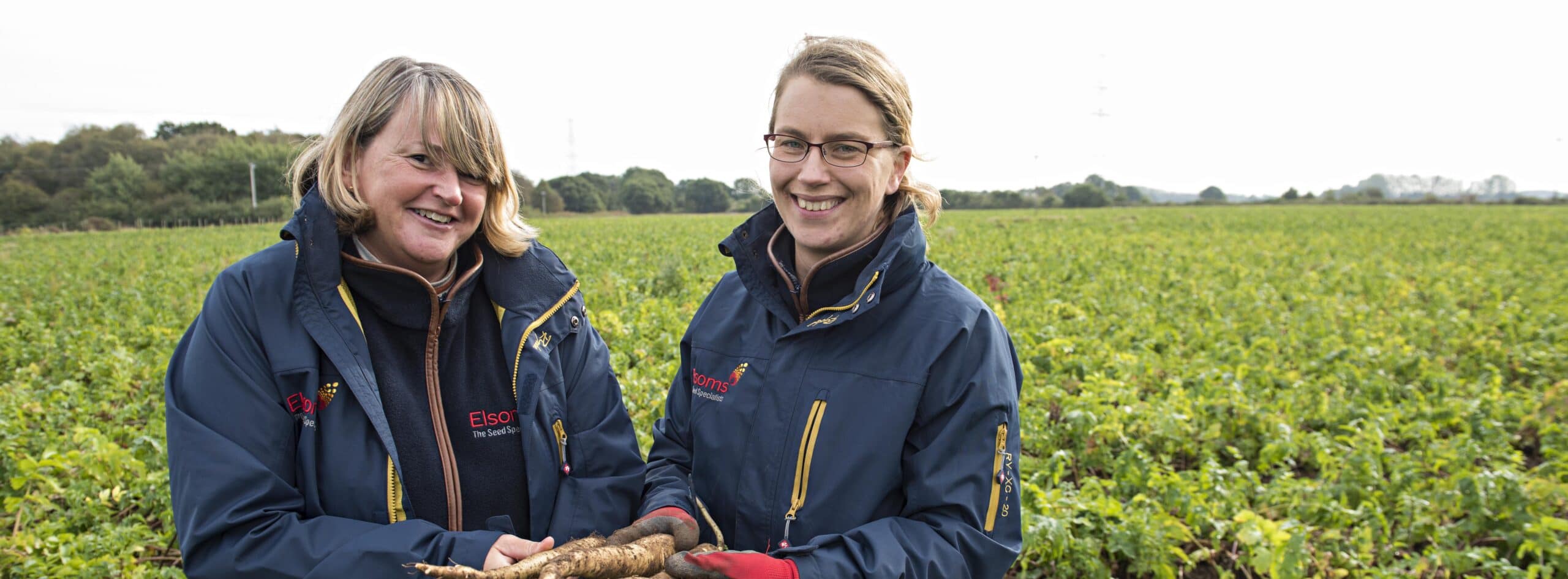Better crop knowledge informs improved parsnip breeding
“Elsoms’ first hybrid parsnip varieties were released in the early 2000’s and before that everything had been open pollinated varieties,” explains breeder Richard Tudor. “The first two varieties were Panache and Polar, and these were followed by a generation of varieties which included Pinnacle, Picador, the organic variety Pixie and Palace, which went on to become a market-leading variety.
“These first varieties were followed by a newer generation comprising of Pacific, Pearl and Panorama, which offered much better disease resistance and improved shape. Now we have Phantom and Pegasus which further improve on the root shape and colour, combined with further improvements in disease resistance.”
The improvements seen in each new generation of Elsoms’ parsnip varieties have been driven by a continual process of research to better understand the factors that affect crop performance and marketable yield. Backed by practical trials and selection systems, this process guarantees that the material taken forward for commercial sale is a step above previous varieties. “We have been building up the pressure in our disease tunnel for nearly twenty years,” adds Richard. “Any disease isolates that we identify from growers are incorporated into this very high-pressure environment. Any new lines must show improved disease performance compared to our existing material before they are taken forward.”

As well as practically assessing disease resistance, continued uncertainty about the exact pathogens that cause parsnip canker led Elsoms to co-fund a PhD by Dr Lauren Chappell, at the University of Warwick. This investment made by Elsoms to investigate the causes of the disease complex has resulted in the knowledge being applied and helped to improve the disease resistance in the latest parsnip lines.
As issues such as disease susceptibility have begun to be addressed, other issues, such as bruising, have become more of a concern for growers, packers and processors. “The susceptibility to bruising is now more of a consideration for growers when choosing a variety,” says Crop Manager for Parsnips, Keely Watson. Another PhD, this time involving David Booth at the University of Birmingham, and Harper Adams University, is using tools including an ‘electronic parsnip’ to determine if there are genetic differences in sensitivity to bruising.
Keely continues, “Other issues that are becoming increasingly important, partly due to changes in the supply chain and retail preferences, are how well the variety stores – for example Pearl has really good field storage potential, and how easy varieties are to process – Phantom achieves very high pack-outs, and an ability to withstand handling through the supply chain. Reliability is one of the main focus points when looking at our new material. We know this is a deciding factor for growers when choosing a variety and any new variety needs to stand up in both the field and the factory.”
Yield is probably the biggest consideration and Richard explains that creating a more tapered root shape with a less bulbous crown is one key to improving parsnip yield. “By carrying weight down the root you can start to increase yield,” he says. “We have always selected varieties for improved shape but it has always been subjective.” Today the company uses automatic image recognition and analysis to accurately measure root shape and volume to quantify differences between varieties.
The first varieties to benefit from these assessment techniques are Phantom (seen in trials over the last few years as PH25) and Pegasus (PH26), and both varieties combine good resistance to diseases and bruising with good early vigour, and seed is now available for commercial trials. “Phantom is a more refined root which produces good pack-outs,” comments Keely. “Pegasus is the whiter of the two varieties and is a little larger, but still suitable for pre-packing.”
Development never stops and Elsoms is investing heavily in developing a range of new breeding and trialling techniques to get even better varieties to market quicker. It is also part of a Knowledge Transfer Partnership with Robbie Gillett at Cranfield University working to further improve seed quality. “While there is all this work which goes on behind the scenes that people don’t always see, it is feedback from the industry which drives what we do,” comments Richard. “It will be the industry that determines the developments seen in our next generation of parsnip varieties.”
- Feature from the December 2019 issue of The Vegetable Farmer – Author: Richard Crowhurst.
